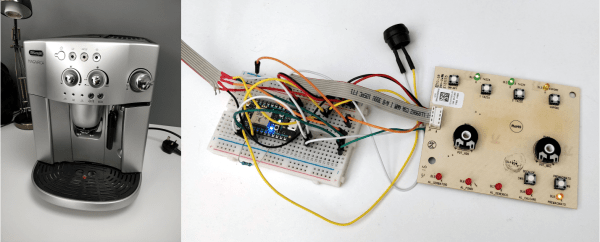It’s getting harder and harder to think of a modern premium-level appliance that doesn’t come with some level of Internet connectivity. These days it seems all but the cheapest refrigerators, air purifiers, and microwaves include wireless capabilities — unfortunately they’re often poorly implemented or behind a proprietary system. [Matt] recently purchased a high-end coffee maker with Bluetooth functionality which turned out to be nearly useless, and set to work reverse-engineering his coffee maker and adapting it to work by sending commands from GitHub.
Since the wireless connectivity and app for this coffee maker was so buggy and unreliable, [Matt] first needed to get deep into the weeds on Bluetooth Low Energy (BTLE). After sniffing traffic and identifying the coffee maker, he set about building an interface for it in Rust. Once he is able to send commands to it, the next step was to integrate it with GitHub, so that filing issues on the GitHub interface sends the commands from a nearby computer over Bluetooth to the coffee maker, with much more reliability than the coffee maker came with originally.
Using [Matt]’s methods, anyone stuck with one of these coffee makers, a Delonghi Dinamica Plus, should be able to reactivate the use of its wireless functionality. While we’d hope that anyone selling a premium product like this would take a tiny amount of time and make sure that the extra features actually work, this low bar seems to be oddly common for companies to surmount. But it’s not required to pick up an expensive machine like this just to remotely brew a cup of coffee. You can do that pretty easily with a non-luxury coffee maker and some basic wireless hardware.













